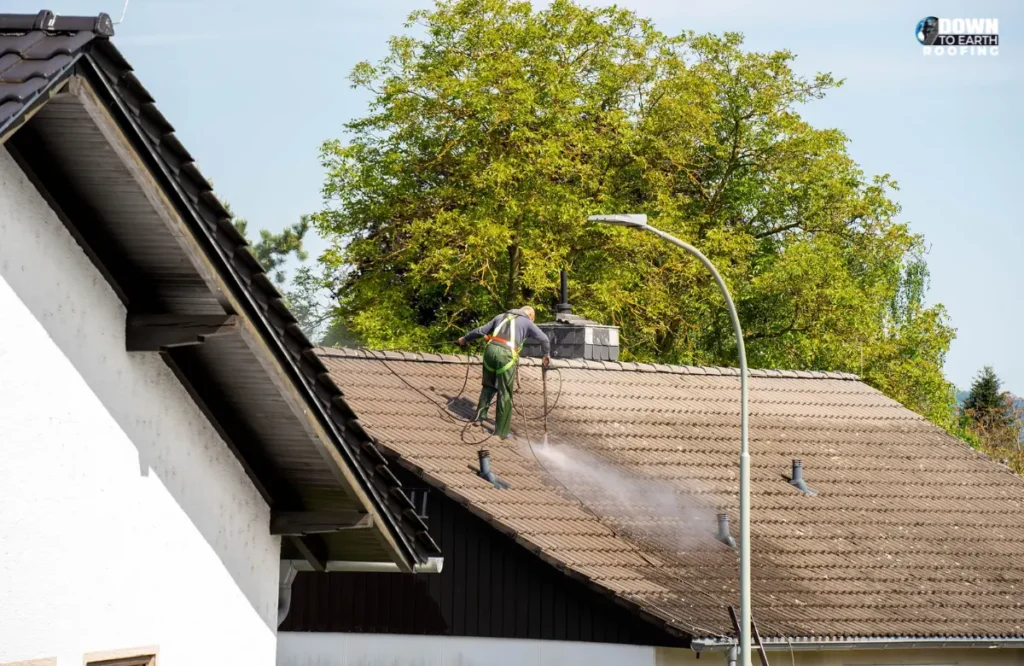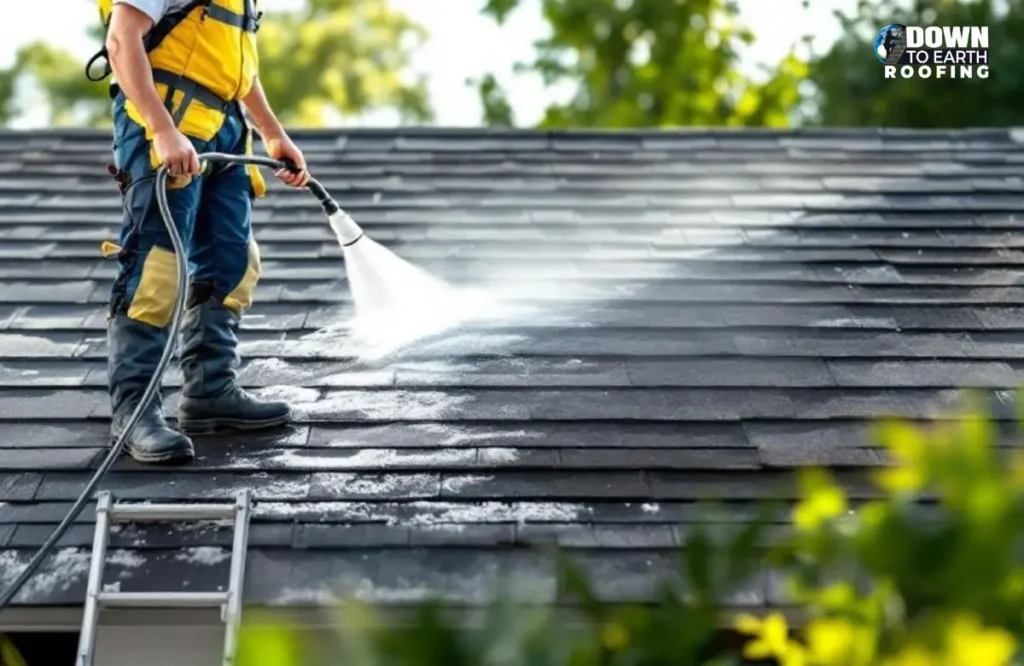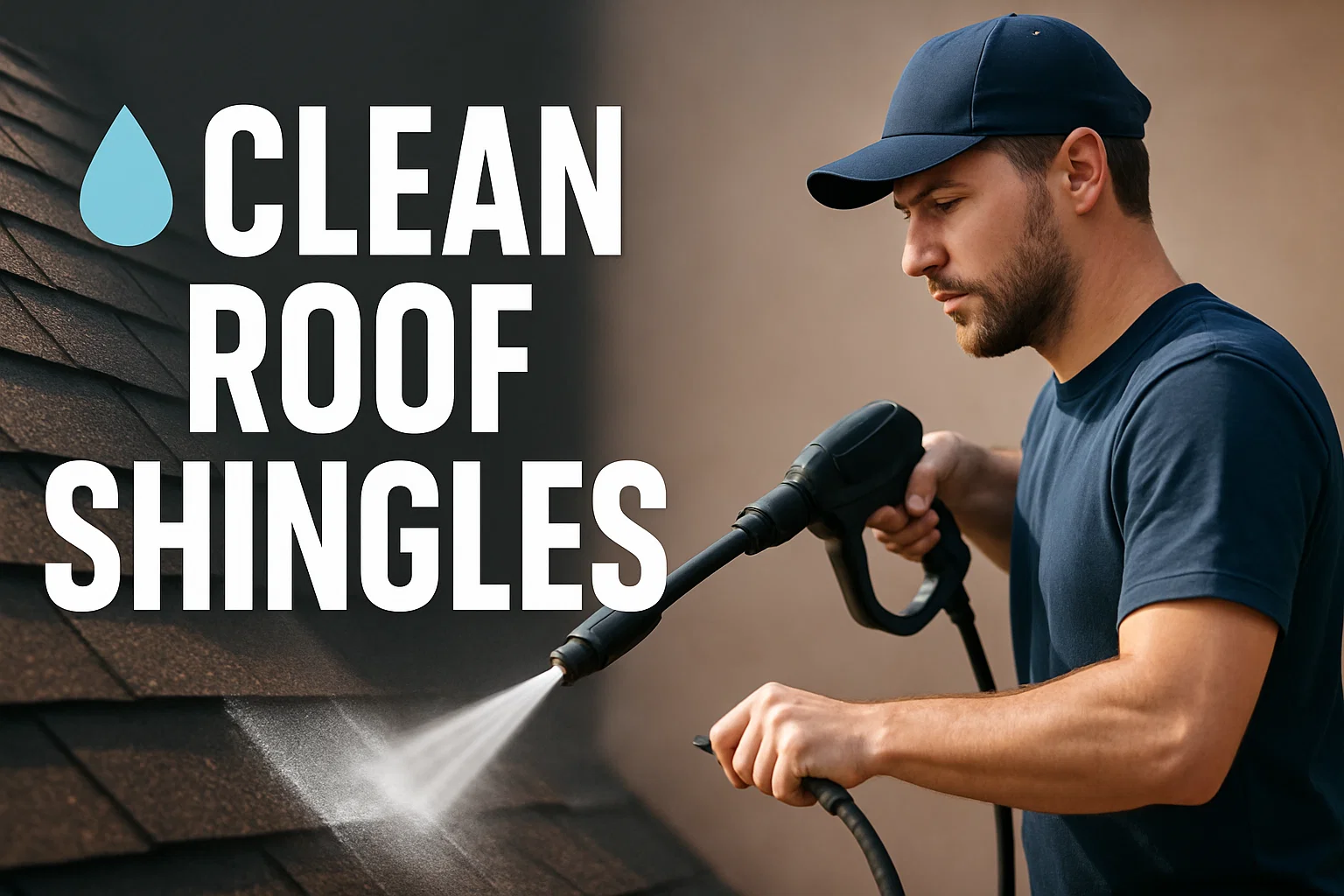The shingles on your roof are your home’s first line of defense against harsh weather, and, at the same time, they are one of the ways your house can enhance its look. Gradually, the roof shingles could also be stained and smudged, and covered with moss, algae, and other types of debris. Through regular cleaning, not only will the roof remain attractive, but also its lifetime will be prolonged as the capacity of shingle buildup will be kept. Here is a step-by-step guide to cleaning roof shingles in a way that is both safe and efficient.
Best Time of Year for Cleaning Roof Shingles
The ideal time to clean roof shingles is the seasons of spring and autumn. Moreover, cleaning on a regular basis every 1 to 3 years, carried out at the right season, is the best method for both keeping the shingles clean and for their longevity.
Spring:
- Get rid of the remnants of winter and moss; make your roof ready for spring rains.
Fall:
- Collect the fallen leaves; prepare yourself for the colder, wetter winter months.
Ideal Conditions:
- Selecting calm, dry days with the temperature ranging between 40°F and 60°F (4-15°C).
What to Avoid:
- If you want to prevent roof damage and other safety issues, d
- o not clean on hot summer days and very cold winter days.
Northern States:
- Perform your cleaning during late spring and early fall, i.e,. when the weather is mild.
Southern States:
- More extended cleaning times can even include late fall or early winter if the frost is not likely.

How to Clean Roof Shingles Safely and Effectively
Shingle cleaning is among the vital roof maintenance tasks that not only helps the roof last longer but also keeps the home in shining condition. However, it is very important to use the correct and safe methods in cleaning to avoid causing any damage to the shingles. Below is a proper cleaning procedure for roof shingles:
Use Proper Safety Equipment
Get all the necessary safety equipment, such as a sturdy ladder, non-slip shoes, gloves, and eye protection, before starting the work. If the roof is steep or high, then use a safety harness and be extra careful to avoid a fall.
Inspect the Roof First
Before cleaning, check if any damaged or loose shingles need repairing. Cleaning a roof that is damaged can make the damage worse.
Select an appropriate day
Choose a calm, dry, cloudy day with mild temperatures (preferably below 60°F) to carry out the cleaning. This helps the cleaning solution to be more effective and there is a lesser risk of falling or sun damage.
Remove Loose Debris
Carefully sweep up leaves, twigs, and dirt with the soft brush, broom, or leaf blower. Do not scrub vigorously enough to damage the shingles.
Use Safe Cleaning Solutions
Prepare a roof cleaning solution with one part bleach and three parts water with a slight quantity of mild detergent, or a commercial shingle cleaner. Use thick chemicals that will not destroy your rooftop or any plants around your home.
Apply Cleaning Solution Carefully
Spray the cleaning solution over the shingles with a garden pump sprayer. Allow it to stand (15 to 20 minutes) to dissolve algae, moss and stains.
Gently Scrub if Needed
In hard-to-reach areas, scrub lightly with a soft-bristle brush. However, do not loosen or rip off shingles.
Rinse Thoroughly
Hose the cleaning solution off with a spray nozzle to run the hose down the building. Pressure washers should also be avoided because they may expose the shingles to protective granules.
Protect Surrounding Areas
Put plastic films over the plants and landscaping before cleaning, and rinse them thoroughly to remove any cleaning solution runoff.
Regular Maintenance
Roof cleaning should be done every 1-3 years, depending on the environment. Also, keep the gutters clean to prevent debris from building up.
Soft Wash vs. Pressure Wash for Roof Cleaning
| Feature | Soft Wash | Pressure Wash |
| Pressure Level | Low (150-300 PSI) | High (1,300-3,000 PSI) |
| Cleaning Method | Uses gentle water + cleaning solutions | Uses strong water jets |
| Roof Surface Impact | Safe for shingles, tiles | Can damage shingles, tiles |
| Effectiveness | Kills algae, mold for long-lasting results | Removes dirt quickly but risky for roofs |
| Risk of Damage | Very low | High |
| Best For | Delicate roofing materials | Hard surfaces like concrete |
Soft washing can clean gently and safely. Thus, it is best for the roofs. Pressure washing is a powerful machine that can lead to roof damage if not handled carefully.
What Cleaning Solutions Are Safe for Asphalt Shingles?
Properly cleaning asphalt shingles requires solutions that can thoroughly remove moss, algae, stains, and material damage. The following are some of the most effective and safe cleaning solutions as well as tips for asphalt shingles.
• Bleach and Water Solution:
One of the most widespread and efficient homemade cleaners is the combination of chlorine bleach and water (volume 1:1). The bleach destroys moss, algae, and mildew and is diluted sufficiently not to damage the shingles when used correctly. Add a little non-ammonia detergent to enhance power.

• Commercial Roof Cleaning Products:
There are many commercial cleaners specifically designed for asphalt shingles that are safe and plant-friendly. These often contain oxygen bleach or other gentle agents, which clean effectively without bleaching or damaging shingles.
• Oxygen Bleach (Sodium Percarbonate):
Oxygen bleach is the best choice for a safe alternative to chlorine bleach. It completely removes the organic stains and the molds that grow on the granules of the shingles and also the surrounding plants without causing damage.
Important Usage Tips:
- It is important to apply the cleaning solution with a garden pump sprayer, spreading the solution uniformly.
- Leave the solution to dissolve organic growth for 15-20 minutes without letting the cleaning solution dry up on the shingles.
- Rinse the cleaning solution with a garden hose. Use neither a power washer nor high-pressure jets of water because removing the granules of the shingles allows your roof to be ruined.
- To avoid damage to plants and landscaping by cleaning solutions, first water them, then use plastic to cover if needed.
- Do not wash during hot sunny days because the chemicals may dry up quickly and become inefficient.
- Use these proper techniques; otherwise, it is better to hire a professional to get the best results.
Conclusion
To maintain the roof, it is necessary to keep it clean in order to avoid damage and increase its lifespan. Cleaning schedules eliminate algae, moss, and debris that may weaken shingles and curb appeal. Your roof can be washed using a soft or any other safe approach. However, it will do better and last longer when the house is maintained. For professional roof cleaning that ensures safety and quality, trust experts who use effective, eco-friendly solutions.
FAQs
What frequency of roof cleanliness?
It takes every 1 to 3 years, depending on your local weather and roof condition.
Can I clean the roof myself?
There can be small jobs, but it is safer and more effective to hire professionals.
Is soft washing superior to pressure washing?
Yes, soft washing is less intensive on shingles.
Which washing agents can be used on asphalt shingles?
Some detergent, a blend of bleach and water or commercial roof cleaning.
Does a roof cleaning hurt my roof shingles?
It may be so when done unsafely, particularly on high-pressure washing.
Should I wrap up my plants in advance of roof cleaning?
Yes, cover and water the plants to guard them against erosion.
What is the time to call a professional to clean the roof?
When your roof is steep, or large, or much covered with moss or algae.


